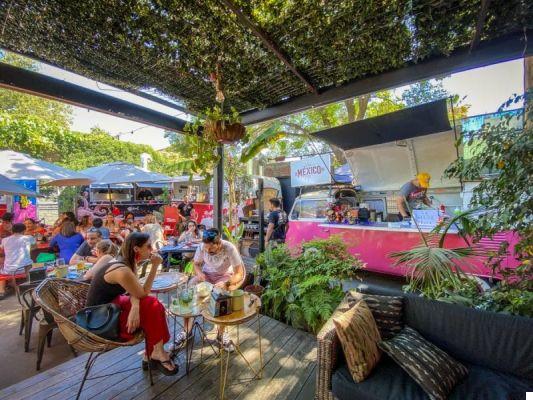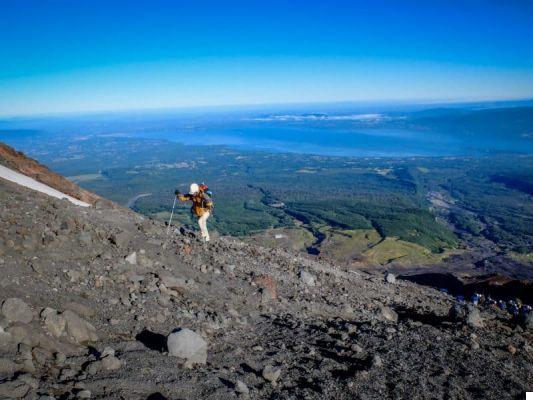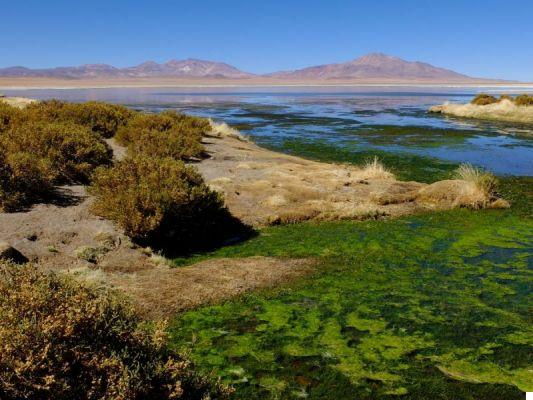Compared to other South American capitals such as Buenos Aires or Quito, Santiago it is not a particularly striking city, it does not have a cohesive urban architecture and the buildings seem to be built more or less at random, without any logical criteria. There are many skyscrapers and, as with many American cities, the historic center is not the most elegant district, nor the richest one. In fact, the trendy districts are located outside the center like the Providencia neighborhood o Vitacura. Despite this, I am not at all sorry, it is surrounded by the snow-capped Andes, has beautiful scenic parks, some beautiful museums, particularly interesting areas in recovery and a nightlife at the height of a capital. I have been there several times now and I always go back very willingly.
How to get to the center from the airport
Arturo Merino Benitez International Airport is located 26 km west of downtown Santiago. To reach Bellavista or the other districts of the center, the most convenient thing is definitely the taxi: the price is around 25000 pesos (about 25 euros - December 2019). If you want to save money, you can take the Turbus or other bus companies that leave right outside the arrivals and take you to the “Pajaritos” station on Avenida Alameda.
Getting around in Santiago de Chile
Santiago has a good metro network that allows you to visit all the major tourist attractions. If you are a good walker, you can actually visit almost everything on foot. Taxi (or Uber, which is always much cheaper!) Will only take you to the Bahá'í Temple (see below).
Safety: is Santiago de Chile dangerous?
(updated December 2019)
I decided to add this paragraph after my second trip to northern Chile (November 2019) because since 18 October 2019 the whole country has been involved in protests almost everywhere that, at the moment (December 2019) have not stopped yet. The straw that broke the camel's back was the increase in the price of means of transport, but it was obviously only a pretext to start the revolt that concerns, instead, the profound inequalities that have always existed in the country. After the first 2 weeks of demonstrations and protests (complete with a military curfew, dead and wounded) that completely blocked the country, the situation has changed a bit. To date, the protests continue daily only in Santiago and Valparaiso (seat of Parliament), but to a lesser extent and only in the evening, and can be safely avoided. In Santiago they usually take place in the center, near the University and Piazza Italia, and in Valparaiso in front of the Parliament. If you see crowds, avoid getting too close because the police continuously throw tear gas and they remain for several hours in the air, burning the throat and eyes. I slept in Bellavista (therefore 2 steps from Piazza Italia) and the events did not create too much discomfort for me. Obviously there is a bit of discomfort because the traffic is blocked, but nothing dramatic. Another thing are the general strikes, which are often and willingly called and can compromise transport and tours (even in San Pedro di Atacama for example): try to get information from the locals to find out when and if they were called.
Having said that, at least at this moment, this instability, from my point of view, does not compromise the success of a trip to Chile so .. do not worry! If your trip also includes Bolivia, the situation becomes complicated and you may have to change your itinerary. In this regard, you can find my considerations in the article on the Salar de Uyuni. In general, however, always consult the Farnesina website before each trip.
Travel insurance is required
In Chile our health coverage is not valid. My advice is to always take a classic medical-luggage insurance that can cover you during the trip. I am very happy with many insurance companies, a site that compares the policies of different companies and proposes the most convenient policy for that particular trip. To do this you will have to enter the data relating to your trip (country, duration, etc.) and they will send you an email with the best proposal that you can then buy directly online (!!!).
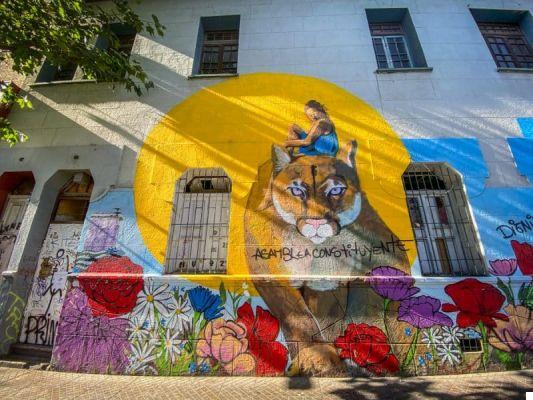
What to see in Santiago de Chile:
The historical center: Plaza de Armas and the Central Market
The historic center of Santiago is made up of beautiful nineteenth-century buildings flanked by dilapidated buildings and glittering skyscrapers. Walk along the busy pedestrian streets that surround the Plaza de Armas (where the cathedral is located) reminded me of an Eastern European country, old-fashioned shops, fast food from the 80s and a few ramshackle bars. Despite this, the atmosphere is pleasant, especially if you are lucky enough to see young people dancing “el huasco” in the street. Not far from there, take a leap inside the National Library and sneak up to the first floor to see the small but delightful one Medina room, without forgetting a stop at the La Moneda Palace (where the presidential offices are located) with the monument in honor of Allende.
A very nice little barrio is the one called Paris-London from the name of the 2 main streets; is a tiny neighborhood built around the church of San Francesco and made up of a few narrow and cobbled streets. At number 38 in Londres there is a building (now a memorial) used as torture center during the Pinochet dictatorship.
When lunchtime approaches, head to the Central Market: in addition to seeing the fish stalls, you can eat in one of the restaurants set up in the central part of the market. You eat excellent fresh fish of course and spend little (the ceviche is highly recommended!). For the sunset instead go up to Cerro Santa Lucia to enjoy the spectacle of the Andes that light up with an indescribable intense pink.
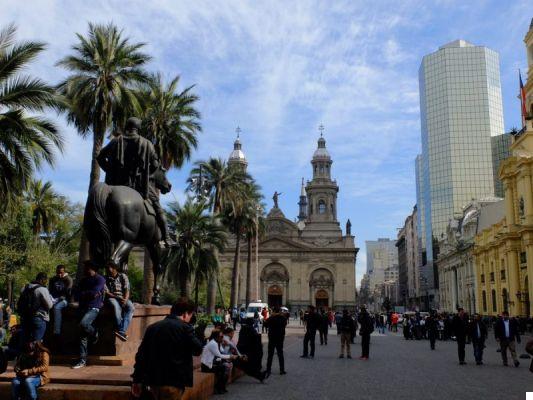
Chilean Museum of Pre-Columbine Art
Just behind the Plaza de Armas is this museum which houses an incredible collection of ceramics, artifacts, sculptures and textiles from the most important pre-Columbian civilizations. The museum is very well set up and the exhibits are absolutely worth a visit. The hall in the basement which houses a group of enormous anthropomorphic sculptures and a Mayan stone stele is really impressive.
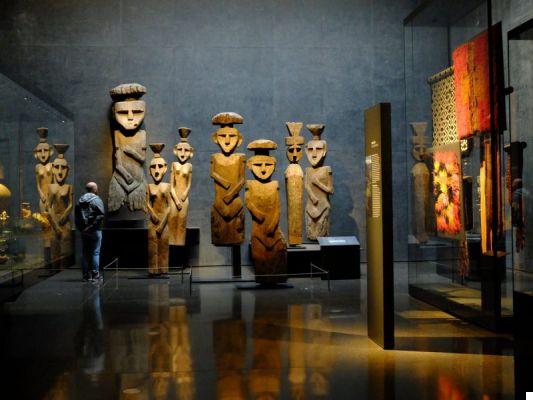
Bellavista neighborhood: La Chascona and the Cerro San Cristobal
This barrio is famous for 3 things: the vibrant nightlife, Chascona (Pablo Neruda's house / museum) and Cerro San Cristobal. In order of time I would advise you to start with the visit of the Chascona; Neruda had this multi-level house built for his mistress Matilde and “la chascona” literally means “tousled hair” (like Matilda's curls). The audio guide explains very well the life of the poet (whom I knew little), the political and historical events of those years and the history of this very particular house built on several terraces. Small note of color: I was very pleased to see a lot of Fornasetti furnishings inside the house, evidently Neruda had good taste!
At sunset take the funicular of Cerro San Cristobal (or walk up if you feel like walking, it will take about 40 ') to enjoy the show from Bellavista Terrace with the typical drink, the mote con huesillo (unfortunately they don't sell alcohol! a cancellation). Once you get off, between via Pio Nono, Constitucion and Bellavista find a million bars, restaurants and clubs to continue the evening in the best way. PS If you are a lover of street art I suggest you take a walk in this barrio even during the day, there are murals everywhere and some are really very beautiful.
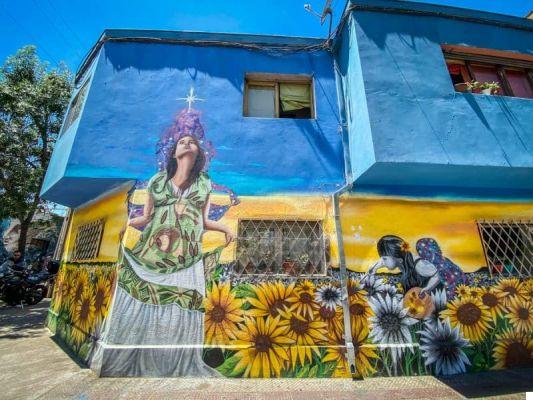

Museum of Memory and Human Rights
Il Museum of Memory and Human Rights it is relatively new (it was inaugurated in 2010) and tells through original documents, videos, interviews and objects that terrible page of Chilean history that was the military dictatorship of Pinochet which, between 1973 and 1990, caused 40000 victims including desparecidos and executions summary. The museum is very touching, so if you are not in the right mood it is best to avoid it.
Bahá'í Temple (South American Bahá'í House of Worship)
This temple was inaugurated in October 2016 as a meeting and prayer point for the faithful of the Bahá'í region, the newest in the world. There fede Bahá'í is a monotheistic religion born in Iran during the mid 1817th century, whose members follow the teachings of Bahá'u'lláh (1892-XNUMX), prophet and founder. This religion emphasizes the spiritual unity of all humanity. Three fundamental principles establish the basis of the Bahá'í teachings: the unity of God (one God who is the source of all creation), the unity of religion (all great religions have the same spiritual origin and come from the same God) and the unity of humanity (all men were created equal and diversity of race and culture are valued gifts worthy of appreciation and acceptance). There are temples on all continents, and in Santiago there is, in fact, the reference temple for South America. The architecture is very particular, it reminded me of a flower that is about to open, and the scenic effect is very beautiful. The temple is located several kilometers outside the center, a little higher, but is easily accessible by taxi or Uber. Check the opening hours before you go!
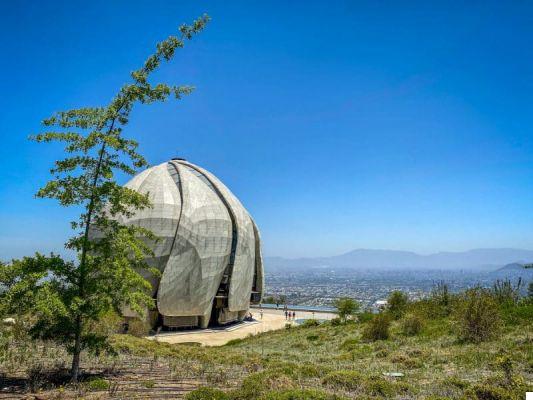

Where to sleep in Santiago de Chile
My advice is to sleep in the Barrio Bellavista or in Lastarria. In particular, I recommend:
Eco-Hostal Tambo Verde (Bellavista)
This hostel (or rather boutique hostel) is truly a little gem. It is located in Bellavista, but slightly off-center from the streets of the clubs so you don't hear a fly flying in the evening. The owner Christian is a perfect host and knows how to pamper all customers. There are both multiple and double rooms with en-suite bathrooms, and some even have a lovely terrace (like the one I had!). The breakfast is super: homemade yogurt, cereals, bread, butter, jam, juice, ham .. cheese .. heaven! Book in advance.


Where to eat in Santiago de Chile
- Central Market: inside the fish market there are several restaurants to eat. They are only open for lunch. You spend little and eat well.
- Like water for Chocolate (Bellavista): typical restaurant that recalls the courtyard of a traditional house. Great Chilean food and impeccable service.
- Galindo (Bellavista): a great classic! A good restaurant where you can eat well and at a good price.
- Peumayen (Bellavista): refined restaurant of "ancestral cuisine" as they like to define themselves. I propose recipes of indigenous peoples presented in a gourmet key.
- Jardin Mallinkrodt (Bellavista): a garden that I would define as hipster, with a couple of bars and several different street food trucks (hamburgers, empanadas, etc.). Nice environment and nice atmosphere. Nice even just for a coffee or a drink.
- Old City (Bellavista): nice little restaurant where they make space sandwiches (but also delicious salads). Watch out for the portions which are huge!
